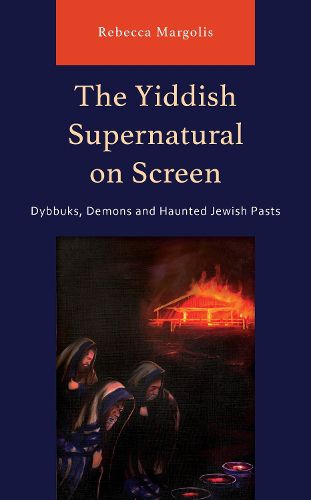Readings Newsletter
Become a Readings Member to make your shopping experience even easier.
Sign in or sign up for free!
You’re not far away from qualifying for FREE standard shipping within Australia
You’ve qualified for FREE standard shipping within Australia
The cart is loading…






As a linguistic carrier of a thousand years of European Jewish civilization, the Yiddish language is closely bound up with immigrant pasts and haunted sites of Holocaust memory. In this book, Rebecca Margolis investigates how translated and subtitled Yiddish dialogue reimagines and reconstructs Jewish lore and tells new stories where the supernatural looms over the narrative. The chapters trace the transformation of the figure of the dybbuk- the soul of the dead possessing the living -from folklore to 1930s Polish Yiddish cinema and on to global contemporary media.; examine the association of spoken Yiddish with spectral elements adapted from Jewish legends in the realm of horror; and illustrate how all-Yiddish prologues to comedy film and television are situated in an immigrant or pre-immigrant past, depicting mystical people or objects that influence the present. Framing spoken Yiddish on screen as an ancestral language associated with trauma and dispossession, Margolis shows how it reconstructs haunted and mystical elements of the Jewish experience.
$9.00 standard shipping within Australia
FREE standard shipping within Australia for orders over $100.00
Express & International shipping calculated at checkout
As a linguistic carrier of a thousand years of European Jewish civilization, the Yiddish language is closely bound up with immigrant pasts and haunted sites of Holocaust memory. In this book, Rebecca Margolis investigates how translated and subtitled Yiddish dialogue reimagines and reconstructs Jewish lore and tells new stories where the supernatural looms over the narrative. The chapters trace the transformation of the figure of the dybbuk- the soul of the dead possessing the living -from folklore to 1930s Polish Yiddish cinema and on to global contemporary media.; examine the association of spoken Yiddish with spectral elements adapted from Jewish legends in the realm of horror; and illustrate how all-Yiddish prologues to comedy film and television are situated in an immigrant or pre-immigrant past, depicting mystical people or objects that influence the present. Framing spoken Yiddish on screen as an ancestral language associated with trauma and dispossession, Margolis shows how it reconstructs haunted and mystical elements of the Jewish experience.